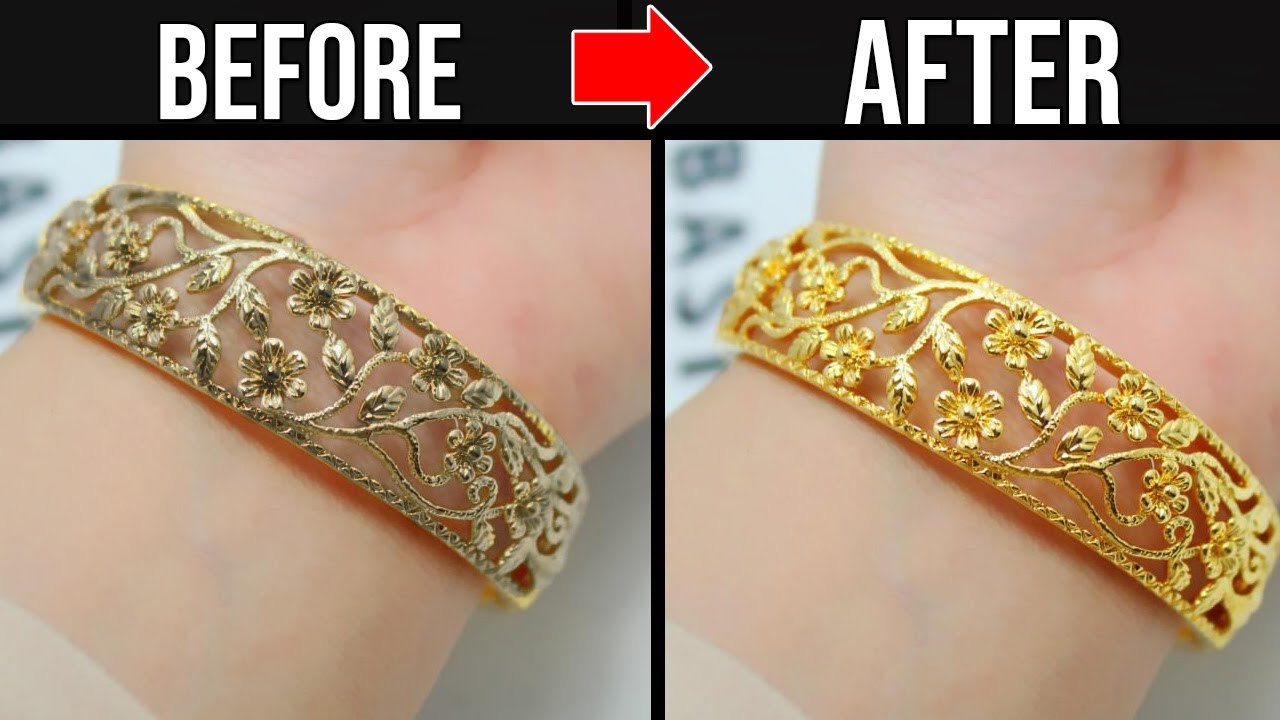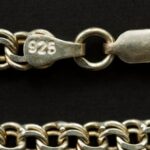Maintaining the brilliance and beauty of your treasured gold jewelry is an essential part of responsible ownership. From delicate necklaces to sturdy bracelets, gold items require specific care to prevent tarnishing, scratches, and the build-up of unwanted substances. In today’s world, where fashion trends often dictate our choices and the value of heirloom pieces is undeniable, knowing how to properly clean your gold jewelry is no longer a luxury, but a necessity. Whether you’re a seasoned jewelry enthusiast or a beginner just starting to appreciate the craftsmanship of gold, understanding the nuances of cleaning methods is crucial for preserving these precious investments. This comprehensive guide dives deep into the various techniques, considerations, and best practices for maintaining the splendor of your gold jewelry, ensuring its beauty lasts for generations. We will cover everything from the basics of everyday cleaning to more advanced methods for restoring antique pieces, helping you develop a personalized cleaning routine tailored to your specific needs and the type of gold you own.
Understanding Gold and Its Care
Different Types of Gold
Gold comes in various karats, each influencing its durability and susceptibility to damage. 18-karat gold, for example, is more resistant to scratching than 14-karat gold. This difference impacts the cleaning methods best suited for each type. It’s essential to understand your gold’s karatage before choosing a cleaning solution or technique.

The Chemistry of Gold
Gold is a remarkably inert metal, meaning it doesn’t readily react with other substances. However, impurities and oxidation can still occur over time, impacting its appearance. Understanding the chemical processes behind tarnishing is vital for effective cleaning. This includes the effects of environmental factors like chlorine and sulfur.
Factors Affecting Gold’s Appearance
-
Environmental Exposure: Chlorine in swimming pools and sulfur in air pollution can cause discoloration.
-
Build-up of Impurities: Dust, sweat, and other substances can accumulate on the jewelry, affecting its shine.
-
Wear and Tear: Constant wear and friction can lead to scratches and dulling over time.
Basic Cleaning Methods
Everyday Maintenance
For routine cleaning of your gold jewelry, a gentle approach is key. Avoid harsh chemicals and abrasive materials. A soft cloth and warm water solution are often sufficient. Use a soft-bristled toothbrush for intricate pieces.
Simple Cleaning Solutions
-
Warm Water and Mild Dish Soap: A gentle soap solution can remove everyday dirt and grime.
-
Baking Soda Paste: A paste of baking soda and water can be used to gently clean stubborn dirt.
-
Soft Cloth and Warm Water: A soft, lint-free cloth and warm water are ideal for general polishing.
Specialized Cleaning Techniques
For more stubborn stains or antique pieces, more specialized techniques are sometimes needed. These may include using specialized jewelry cleaning solutions, ultrasonic cleaners, or professional jeweler cleaning.
Advanced Cleaning Solutions
Professional Cleaning Solutions: Certain jewelry cleaners are specifically formulated for gold and can effectively remove tougher stains.
Ultrasonic Cleaners: These devices use ultrasonic vibrations to dislodge dirt and impurities from delicate and intricate pieces.
Advanced Cleaning and Restoration
Dealing with Specific Stains
Certain stains, like those from chlorine or sulfur, might require a more targeted approach. Consult a professional jeweler if you encounter a stubborn stain you can’t remove yourself. Identifying the source of the stain is crucial for effective treatment.
Case Study: Restoring Antique Gold
Antique gold pieces often require careful restoration techniques. Professional jewelers might employ specialized solutions or tools to remove tarnish without damaging the piece’s historical value. Careful handling and preservation of the piece’s original finish are crucial.
Preventing Damage
Storage and Handling
Proper storage and handling can prevent scratches and damage to your gold jewelry. Storing pieces individually in soft pouches or cases can protect them from rubbing against each other. Avoid exposing gold to harsh chemicals, extreme temperatures, or physical impact.
Tips for Safe Handling
-
Separate Pieces: Store individual pieces in soft pouches to prevent scratches.
-
Avoid Harsh Chemicals: Keep away from chlorine, sulfur, and other corrosive substances.
-
Handle Gently: Avoid rough handling or dropping jewelry.
Summary
Cleaning your gold jewelry is an essential aspect of maintaining its beauty and value. A combination of gentle cleaning methods, proper storage techniques, and preventative measures can significantly extend the lifespan of your precious pieces. Understanding the specific type of gold you own and the potential sources of damage is crucial for choosing the right cleaning approach. Consult a professional jeweler for antique or heavily tarnished pieces to preserve their historical value.
By following these guidelines, you can effectively clean your gold jewelry, ensuring its beauty and brilliance remain for years to come. Remember that prevention is key. Taking precautions to protect your gold from damage and environmental factors will save you time and effort in the long run.
Frequently Asked Questions (FAQs)
How often should I clean my gold jewelry?
The frequency of cleaning depends on how often you wear the jewelry and the environment you’re in. For daily wear, a monthly cleaning is often sufficient. If you wear your jewelry less frequently, a cleaning every few months should be adequate. However, if you’re exposed to chlorine or other harsh chemicals regularly, you may need to clean your jewelry more frequently.
Can I use household cleaning solutions to clean gold?
While some mild household solutions like a warm water and dish soap mixture can be used for routine cleaning, avoid using harsh chemicals or abrasive materials. Strong bleach, ammonia, or other potent cleaners can damage the gold’s finish. Always test any cleaning solution on a small, inconspicuous area first before applying it to the entire piece.
What should I do if my gold jewelry is heavily tarnished?
Heavily tarnished gold jewelry may require a more intensive cleaning process. Avoid using harsh chemicals or abrasive materials on your own. Consult a professional jeweler. They have the specialized knowledge and tools to safely and effectively restore the piece’s original brilliance without causing damage.
How can I prevent scratches on my gold jewelry?
To prevent scratches, store your gold jewelry individually in soft pouches or cases. Avoid exposing it to harsh chemicals or rough surfaces. When handling your jewelry, be careful not to drag it across rough materials. Handle with care and avoid dropping or banging it against hard objects.
Can ultrasonic cleaners damage my gold jewelry?
While ultrasonic cleaners are effective at removing dirt and impurities, they can potentially damage delicate or poorly made pieces of gold jewelry. Always consult with a professional jeweler about the suitability of using an ultrasonic cleaner on your specific piece. They can assess its structural integrity and recommend whether or not an ultrasonic cleaning is appropriate.



